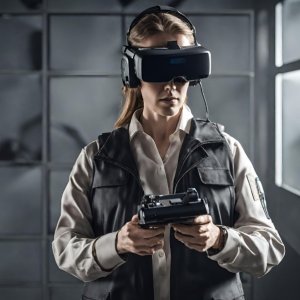Virtual reality (VR) represents a paradigm shift in how patients with chronic illnesses and mobility limitations can be treated. Offering immersive pain relief, quantifiable tracking of recovery progress and the capacity to make repetitive rehab engaging, VR holds immense promise.
VR as a Powerful Pain Reliever
By flooding senses through interactive 3D environments, VR provides unparalleled distraction therapy. Whether undergoing wound dressing changes or physical therapy, the technology can significantly reduce patients’ discomfort. In fact, research shows VR matching or outpacing pain drugs for some procedures – but crucially without side effects.
Some hospitals have rolled out VR relaxation programs to aid long term illness sufferers and counter anxiety or isolation. With chronic conditions expected to affect over 150 million Americans alone by 2030, VR could provide a safe alternative or supplement for combating symptoms.
Revolutionizing Recovery Tracking
VR allows a granular range of motion, balance, and coordination monitoring during rehabilitation exercises using controller inputs or wearables. Historical data comparison further enables personalized goal-setting aligned to recovery timelines for stroke survivors regaining motor abilities or accident victims with spinal cord injuries.
Gamifying Rehab Through Play
Rehabilitation demands repetitive exercises which can be intrinsically boring over time, reducing patient motivation. VR constructs engaging experiences like simulated walks through parks, torso twists represented by avoiding obstacles in a spaceship etc. Such play incentives usage while tracking progress. Patient trial groups report up to 160% higher engagement over conventional rehab.
As pharmaceutical complexity and therapy costs increase, VR promises more affordable and risk-averse chronic condition management harnessing technological interactivity. With extensive clinical trial pipelines testing use cases, VR adoption is likely to accelerate across healthcare in the near future.






